A true treasure of the Americas, hummingbirds are a diverse family of more than 340 species, only 17 of which are found north of Mexico. They are also keystone mutualists, nectar feeders that have coevolved with the indigenous plants they pollinate. For example, in the woody grasslands of Patagonia at the southern tip of South America, many trees, shrubs, and flowering plants can only be pollinated by Sephanoides sephanoides, a hummingbird known as the green-backed firecrown. These birds pollinate a full 20% of local plant species, playing a crucial role because no other pollinator has adapted to pollinate these plants.
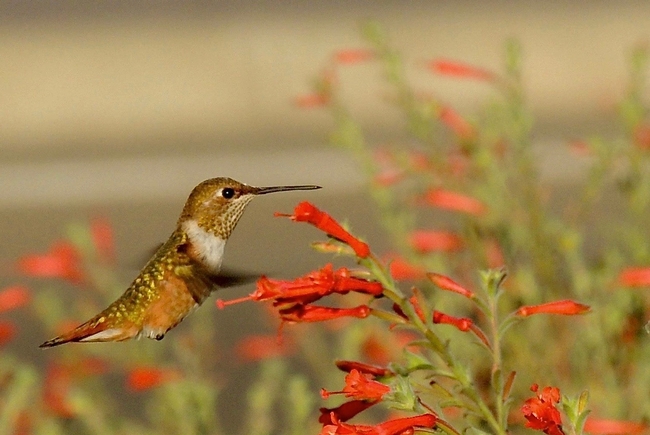
Comprising the family Trochilidae and closely related to swifts, hummingbirds are one of the most diverse avian families in the world. They have adapted to a variety of landscapes which consistently offer an abundance of flowers: temperate woodlands, mountain meadows, cloud forests, tropical rainforests, deserts, and many urban and suburban gardens throughout the United States.Most areas in the U.S. have one or two breeding species, and only the ruby-throated hummingbird nests east of the Mississippi.Most hummingbirds spend the winter in Mexico or Central America, migrating north to their breeding grounds in the southern U.S. and western states as early as February, although the Anna's hummingbird has become a permanent resident in California.
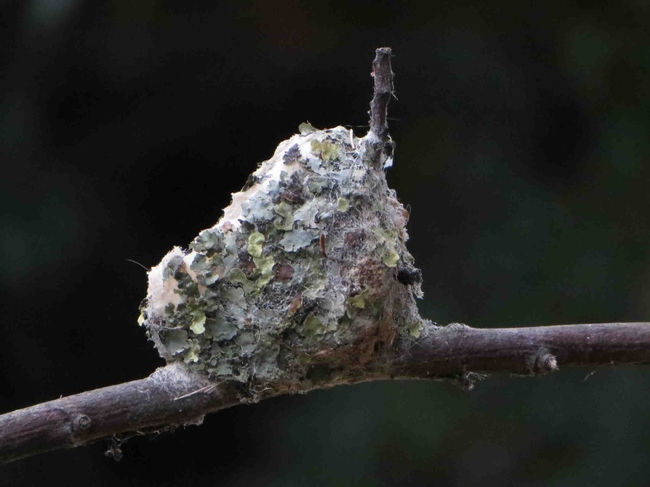
Even so, nectar represents only 20% of a hummingbird's diet; the spiders and insects they catch in midair and feed to their nestlings constitute the remaining 80%. For example, a nesting female Anna's can capture up to 2,000 insects a day; small species like midges and leaf hoppers are preferred. Hummingbirds consume half their body weight in insects and nectar each day.
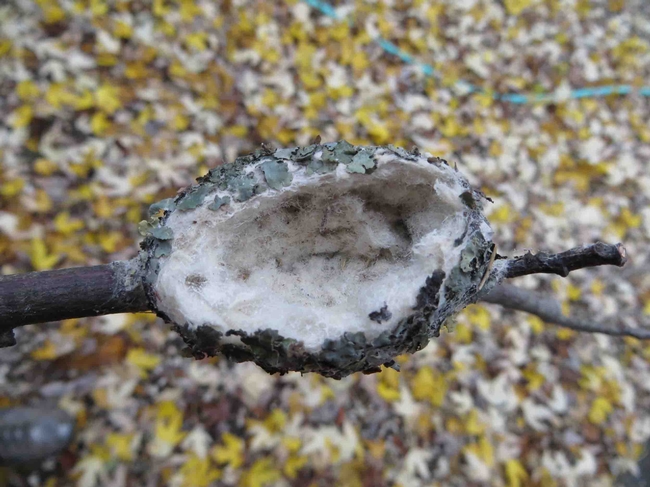
Hummers also have an exceptional spatial memory which directs them to return to the same sugar water feeders after migrating thousands of miles each year. According to Terry Masear in her book Fastest Things on Wings, “Migratory hummingbirds can remember to within inches the precise location and height of a sugar feeder they frequented before heading south for the winter.” They return to the same feeder on the same day, year after year, and if the feeder is hanging higher or lower than last year, they will initially hover at last year's height.
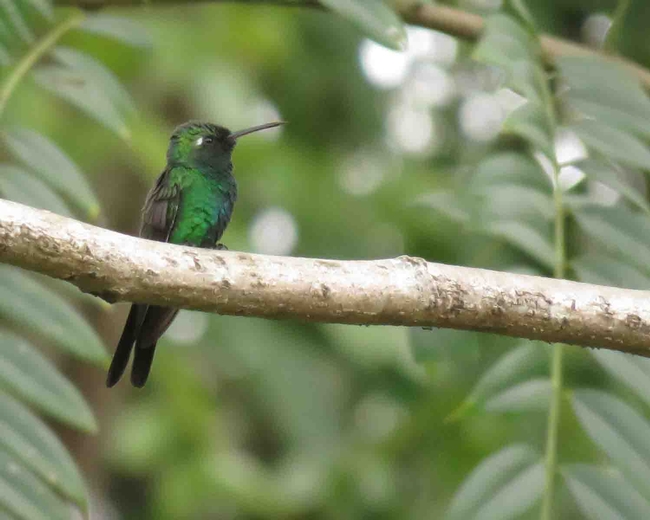
Despite their diminutive size, hummingbirds are fierce and territorial. They will drive their peers away from a favorite food source and will chase and dive at larger birds to defend a nest, while buzzing, posturing and fighting with their needle-like bill and sharp talons.
These tiny aerial acrobats are the only birds able to fully support their weight while hovering, to stop in midair, and to fly backwards, sideways and upside down. They can do this because their wings rotate at the shoulder. They have been clocked at speeds of 25 to 30 mph, doubling or tripling that during courtship dives. They have the stamina to traverse up to 20 miles a day during migration, with nonstop flights of 18 to 22 hours over open ocean, covering thousands of miles in their yearly travels. Unlike waterfowl that migrate in flocks, hummingbirds fly alone.
Hummingbirds owe their shimmering iridescence to microscopic pancake-like structures in their feathers called melanosomes, packed with air bubbles that reflect light.
Humans have long been fascinated by hummingbirds. The Aztec god Huitzilopochtli is often depicted as a hummingbird. The Native American Ohlone people of the central California coast have a creation myth in which the hummingbird figures prominently, as well as a legend explaining how the hummingbird got his brilliant red throat. In Hopi and Zuni culture, Hú (also known as Huhuwa and Tithu or Tocha) is the Kachina of the hummingbird who helped convince the gods to bring rain. The Mayans, Cherokee and Cheyenne have hummingbird legends as well.
The European conquerors of the New World were intrigued by these tiny “winged jewels.” The French called them oiseaux mooches (“bird flies”), to the Portuguese they were beija-flores (flower kissers), and in Spanish they were known as chupaflores or picaflores. The English called them humbirds beginning in 1640, later changing the name to hummingbird.
Butte County Hummingbirds
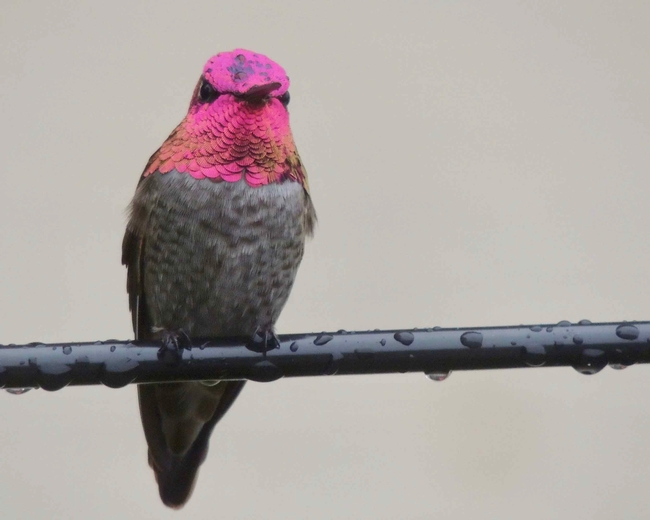
The Anna's hummingbird (Calypte anna), named for 19th century Italian duchess Anna Massena, is one of the larger and more vocal hummingbirds in the United States, and the only one to produce a song. In an elaborate courtship display, the Anna's male flies upward 100 feet or more, then dives at around 50 miles per hour in a U-shaped arc, spreading his tail at the bottom of the dive to create a high-pitched tone and simultaneously flashing his magenta gorget (patch of color at the neck). The Anna's female has a smaller magenta gorget. These birds have adapted to wintering in California when other species migrate, allowing them to take advantage of food sources free from competition.
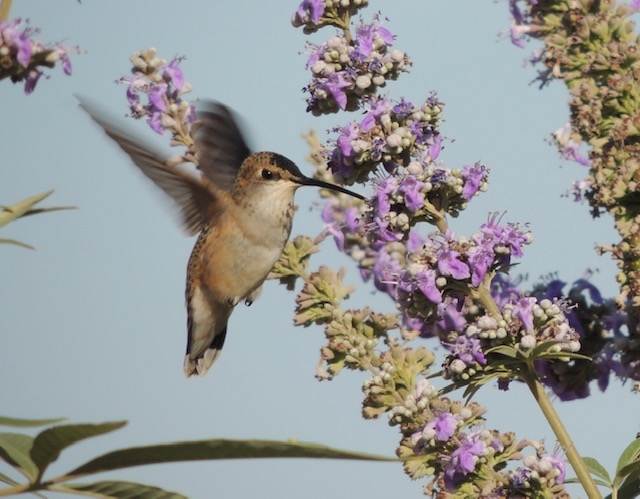
A Hummingbird-friendly Garden
With a little forethought, you can create a hummingbird-friendly environment in your own yard. If you encourage your neighbors to do the same, you can create a corridor of inviting habitat for migrating or overwintering birds.
Sugar water feeders are an obvious addition, preferably more than one and spaced apart since hummingbirds are territorial. Placing the feeder near nectar-producing plants is ideal, so that hummers get a better balance of nutrients from the feeder, plant nectar and insects.

Placing the feeder out of direct sunlight, if possible, will slow down the growth of mold. Clean and refill the feeder every 3 or 4 days, or when it begins to look cloudy or wild yeast starts to form (it appears as flecks on the surface of the liquid around the edges). Clean the feeder with a bottle brush, hot water, and a little white vinegar. Extra sugar syrup can be stored in the refrigerator for a week or so.
“The most important thing about feeders is to keep them clean, which can require vigilance in a hot climate,” states Terry Masear, who rescues and rehabs hummingbirds in southern California, adding that hummers can get fungal infections from dirty feeders, “and it's the most horrible way for them to die.”
The California Native Plant Society advises attracting and supporting hummingbirds by including nectar-rich plants in the garden, especially native plants that hummingbirds have evolved alongside and that depend on them for pollination. Native plants provide more nectar than non-natives, and studies show that hummingbirds prefer natives.
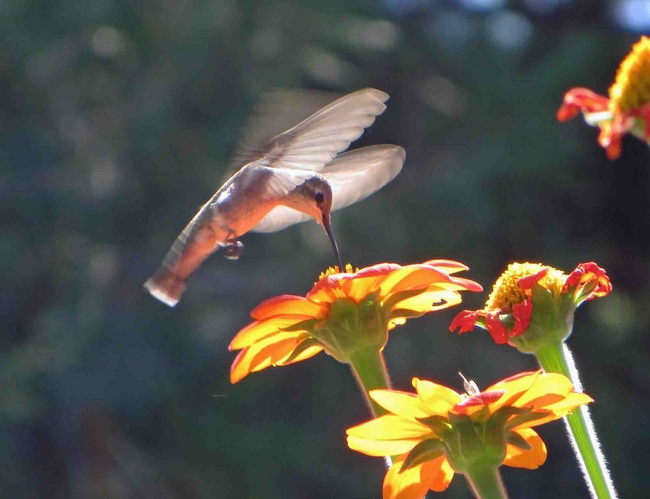
Providing nectar-producing plants that bloom through the seasons of the year will help ensure that hummers keep returning to your garden. For fall to winter bloom, consider planting native perennials such as Manzanita genus Arctostaphylos, Chaparral current Ribes malvaceum, Fuscia-flowered gooseberry Ribes speciosum or Hummingbird sage Salvia spathacea. Non-natives like bottlebrush, bird of paradise, Mountain sage Salvia regla or Indian hawthorne Rhaphiolepis – R. indica are also good choices.
Spring blooming native perennials include Chuparosa Justicia californica, Burgundy desert willow Chilopsis linearis ‘Burgundy', Pink-flowering currant Ribes sanguineum glutinosum, and Black sage Salvia mellifera, while non-native lavender or lantana are also good picks. Native flowers such as California Fuchsia Zauschneria or Epilobium canum, Hummingbird sage Salvia spathacea, species of Beardtongue Penstemon, Indian Paintbrush genus Castilleja and Coyote mint Monardella villosa all begin blooming in spring, as do non-native salvias, snapdragons, and begonia Begonia semperflorens.
Native plants that bloom summer through fall include Monkeyflowers genus Mimulus, Lupins Lupinus and Mexican Bush Sage Salvia leucantha, while non-native Giant hyssop genus Agastache, Hollyhock Althea rosea, Lily of the Nile Agapanthus, Rose of Sharon Hibiscus syriacus, plus petunias and zinnias are all attractive to hummingbirds.
The University of California Cooperative Extension Master Gardeners of Tulare-Kings County offer a helpful plant list: Plants That Attract Hummingbirds: Zones 8 and 9.
The ideal garden for hummingbirds is free of chemicals and a little messy.
Besides diverse and abundant flowering plants grown in large patches for more efficient foraging, a hummingbird-friendly garden includes tall trees for perching and nesting, water for bathing (a misting device is especially attractive), safety from domestic cats and tree trimmers during nesting season, and insects to feed upon.
Throughout the Americas, hummingbirds pollinate plants that in turn feed them nectar, and this keystone mutualism between plants and birds holds their natural habitat in balance. Without hummingbirds, the ecosystem would be dramatically altered. Hence, these tiny “winged jewels” need our attention and protection, because the fate of hummingbirds is tied to our own.
UC Master Gardeners of Butte County are part of the University of California Cooperative Extension (UCCE) system. To learn more about us and our upcoming events, and for help with gardening in our area, visit our website. If you have a gardening question or problem, email the Hotline at mgbutte@ucanr.edu (preferred) or call (530) 538-7201.